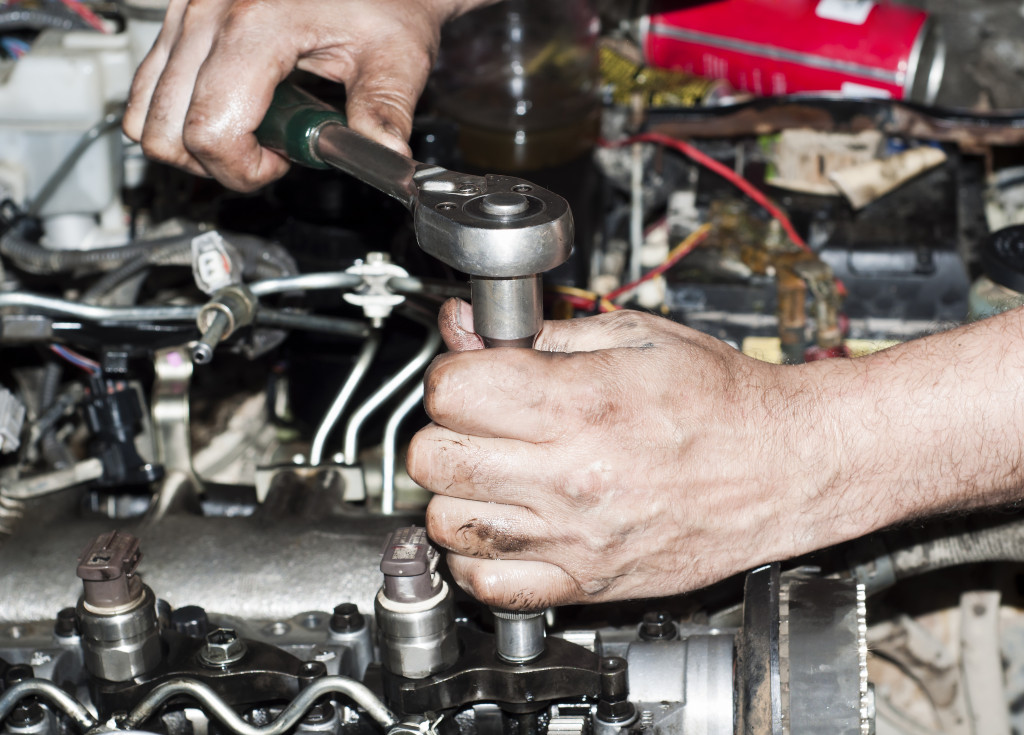- Establishing a regular maintenance schedule for a construction fleet can help to keep costs low and prevent delays.
- Investing in quality parts and components guarantees the safety and reliability of your fleet.
- Implementing advanced technology solutions such as GPS fleet management provides businesses with unprecedented visibility and oversight.
- Training your drivers on the proper use of equipment helps to ensure safe practices and maximize production efficiency.
Managing a construction fleet is no easy task. With so many moving parts, keeping track of all the details and ensuring that your fleet is running efficiently can be challenging. But with careful planning and effective management techniques, you can maximize the performance of your construction fleet and reduce costs.
This article will discuss how to properly manage a construction fleet to get the most out of your equipment and resources. It will cover proper maintenance schedules, fuel efficiency strategies, routing optimization methods, driver safety protocols, vehicle tracking technology solutions, and more. Following these tips and guidelines for managing your construction fleet effectively can save time and money while meeting project deadlines.
Invest in advanced technology solutions
Leveraging advanced technology solutions to manage a construction fleet provides measurable gains in productivity and safety. Utilizing GPS fleet management capabilities, contractors can instantly monitor vehicle locations while accessing real-time data like driver speed, idle time, and fuel consumption.
This powerful system provides businesses with an unprecedented level of visibility and oversight of their operations. Beyond tangible long-term cost savings, investments in these technologies can be invaluable for promoting a safer construction environment with enhanced security measures against theft or nefarious activities.
Properly train drivers

Training your construction fleet drivers on the proper use of equipment is essential to the successful operation of a construction business. Drivers with appropriate instruction in operating machinery and vehicles and following safety protocols not only help to ensure safe practices but also allows for improved production efficiency and cost savings due to decreased output losses.
An effective training program should include a variety of quality, up-to-date educational and engaging information. Investing in upskilling drivers can lead to accelerated growth, improved morale, excellent staff retention, and competitive advantage.
Ensure maintenance
Here are some essential guidelines when it comes to maintaining a construction fleet:
Establish a regular maintenance schedule
Establishing a regular maintenance schedule for a construction fleet has more benefits than just keeping your vehicles running well; It can keep costs low and prevent delays in getting to the job site. Scheduling regular maintenance means checking for any potential issues or repairs that need to be tended to before they become serious problems.
It also allows you to be proactive in your approach, catching minor issues before they affect your bottom line due to costly repairs or time-consuming delays. The result is less downtime, improved productivity, and, most notably, cost savings in managing your construction business.
Invest in quality parts and components

Properly investing in quality parts and components for your fleet vehicles is essential to running a successful construction business. Not only does it help ensure proper upkeep of your vehicles, but also it protects against unplanned incidents and delays due to vehicle failure.
Investing in quality replacement parts guarantees the safety and reliability of your fleet, which you can realize through improved efficiencies and a decrease in downtime repairs and replacements. A fleet that runs smoothly will ensure better performance from the drivers, working conditions, and production cycles; therefore, overall productivity increases resulting in higher profits for the business.
Track vehicle performance data
Tracking vehicle performance data is essential to managing a successful construction fleet. You can do this through regular vehicle inspections and logging operational data into a system for analysis. Doing so allows construction businesses to recognize potential problem areas in their fleet management, such as problems with maintenance, fuel efficiency, or driver performance.
The collected information also enables business owners to compare the effectiveness of different vehicles in the fleet and better identify areas for improvement that will help their bottom line. With the right performance tracking system, construction business owners can stay on top of their vehicle operations, ultimately reducing costs and improving overall productivity.
Maintain accurate records of costs
Taking the necessary steps to maintain accurate records of repairs, service, and other costs associated with your construction fleet can be a great asset to any business. Depending on the company’s needs, this recordkeeping could offer details on how well each vehicle is managed according to its maintenance schedule and performance objectives.
Additionally, it can provide concrete data that helps managers accurately assess fleet cost-effectiveness and aid in the decision-making process regarding replacing vehicles or increasing fleet size. Knowing all this information can help ensure that your construction business runs as efficiently as possible while saving you money in the long run.
These are just some of the considerations when it comes to properly managing a construction fleet. By implementing these strategies, you can ensure that your fleet is running efficiently and cost-effectively while promoting greater safety and productivity.
